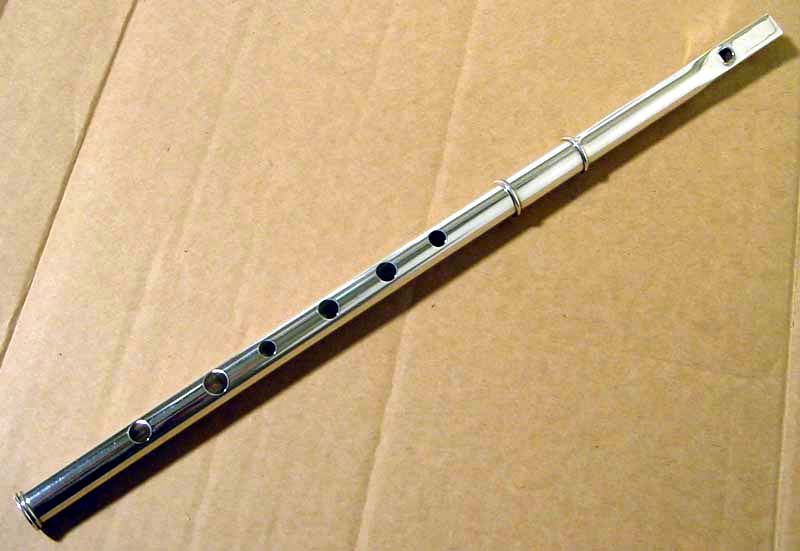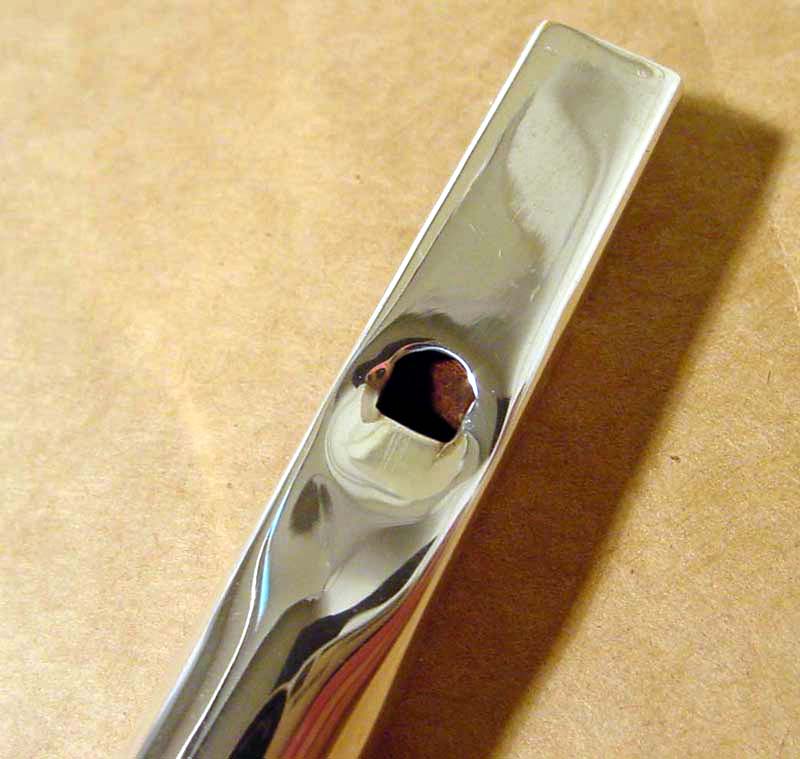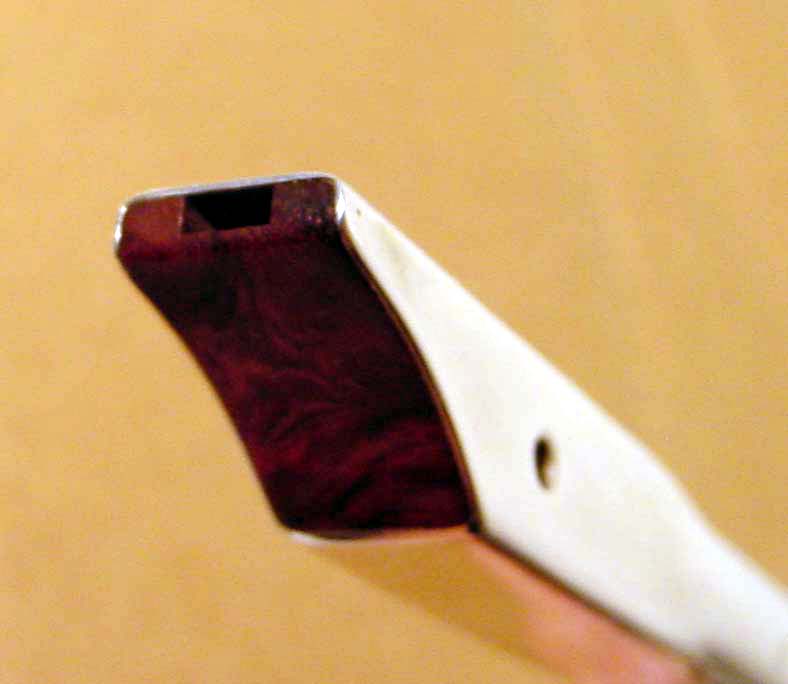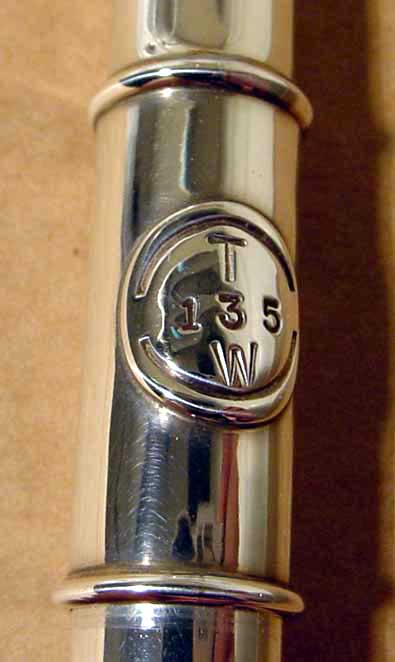Review housed at http://www.tinwhistler.com/reviews.asp
Tully Soliloquy Soprano C whistle
(Review written October 2005)
Preface
There aren’t a lot of reviews out there for Tully whistles, but I’ve always been intrigued by them. There are a couple of whistle smiths that will make solid sterling silver whistles as a special order, but Erik Tullberg makes them as a matter of course. He evidently does plenty of business “under the radar” so to speak, because at the time that I contacted him in September, he had a 2 year waiting list! Please note that while Erik’s wife is away serving the armed forces, he has taken a two year hiatus from making whistles. If you’re really hot for one of these, and want one in less than 3-4 years, it’s probably a good idea to look for a secondhand one.
At a Glance
Whistle Reviewed: Tully Soliloquy Soprano C
Models Available: C and D in three volume levels, plus a neat double whistle.
Construction: Sterling silver and stabilized wood fipple.
Price at time of review: $150.00
Available From: Tully Whistles
How Acquired: Acquired secondhand.
Appearance/Construction
The Tully is a stunning whistle. It’s obviously made of silver, and the metalwork is just incredibly well done. The decorative beads, smooth holes, and lack of rough tool marks anywhere on the whistle all point to someone who really knows their way around working metal. Non-whistle people that I showed the whistle to automatically assumed it was one of the more expensive whistles in my roll-case.

Here’s the full whistle. Sleek and shiny without being ostentatious about being made of silver. The whistle is free of physical flaws of any kind. It’s just looks so classy!

Here’s a close-up of the mouthpiece. The brown you see there inside the wind chamber is a bit of the fipple, which extends quite a bit into the wind chamber area, and with a steep angle cut on it. I don’t think I’ve ever seen fipples constructed quite like this before. The labium ramp is also quite nifty. On the louder models, the windway exit area is much wider, naturally.

Here’s another angle on the mouthpiece, showing the fipple area. Again you can see the narrowed wind channel. The fipple is made of a “stabilized” resin-impregnated wood. I can’t imagine having any of the typical wood troubles with it like swelling or cracking.

This is the tuning slide area. I’m showing you the backside, so that you can see the Tully logo. The serial number is actually a little bit of a code. 135 doesn’t represent the 135th Tully ever made but the 35th whistle made in 2001. Erik tells me that this was probably one of his first five C whistles ever made, and that he’s widened the bore somewhat since then to strengthen the lower octave.

A shot at the end of the whistle, showing the last three holes. You can also see some more of that nice metalwork at the base of the whistle. The holes are cleanly made, and centered nicely down the whistle.
Playing Characteristics
Non-pure with a nice chiffy character. The chiff is a slightly windy sound without being as extreme as a Shaw or Serpent. The chiff doesn’t get too out of hand up in the high end of the second octave, either.
Sound clips of the whistle:
Off to California
Glass of Beer played pretty fast just to show that this whistle can take it.
Volume: Quiet but not too quiet. Quieter than my Sweetone in the first octave. By the time I hit the second octave E, they were pretty equal in volume, but the Sweetone got louder again by the time I hit the high B. I couldn’t play this in the loud sessions I play at, and be heard. But then again, that’s why Erik makes two grades of whistles louder than this one.
Responsiveness: No problems whatsoever. Sometimes, chiffier whistles can lose some responsiveness or be unfocused at the extremes of speed. The chiff never gets in the way on this one. Check out my Glass of Beer sound sample to see what I mean.
Tuning: This whistle definitely benefits from being warmed up. Cold, the whistle is a few cents flat even with the tuning slide all the way in. It warms quickly though, and after a few breaths through the whistle, I can pull the slide out about a quarter inch and bring it into A=440. The E note requires a little extra push to bring it into line, but this is pretty common in tinwhistles (on a D whistle, this would be a little more push on the F#). The all-holes open note (C) requires a little extra push too. This lower octave is a bit weak on this whistle, but Erik has mentioned that he’s addressed that in his latest work.
B-flat (C whistle equivalent to C-natural): OXXOOO is much too sharp on this whistle (in the neighborhood of 60 cents). OXXXOX was the best fingering I found, and you have to back your breath off a little or you’ll still be 10 cents sharp or so.
Hole size and placement: The holes are nicely centered on this whistle, and nothing is too far apart or too close together. It’s a pretty comfortable whistle to play
Air volume requirements: Fairly Low. This whistle doesn’t require much air at all. I was able to play two repetitions of the A part and one repetition of the B part of Clare Jig before running out of breath.
Air pressure requirements: Low again, especially in the first octave. The breath requirements move much closer to average at the top half of the second octave.
Clogging: I would have thought this whistle would be cloggy. Maybe it’s the silver, but I just didn’t have any issues with it. Low maintenance!
Wind Resistance: Negligible. A light breeze takes this whistle out of commission. If you’re going to be playing outdoors, you might want to look into Erik’s “Oomph” model.
Summary Pretty nice whistle. Isn’t too bad for a beginner, though the B-flat note will require some special attention. It definitely executes that chiffy sound without some of the more unpleasant side effects that can come with it. And at a bargain price, especially considering that it’s made of a precious metal! There seems to be some pretty good reasons that you don’t see these come up for sale very often.